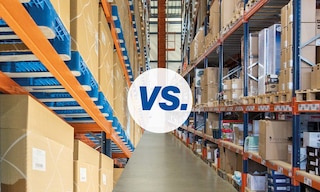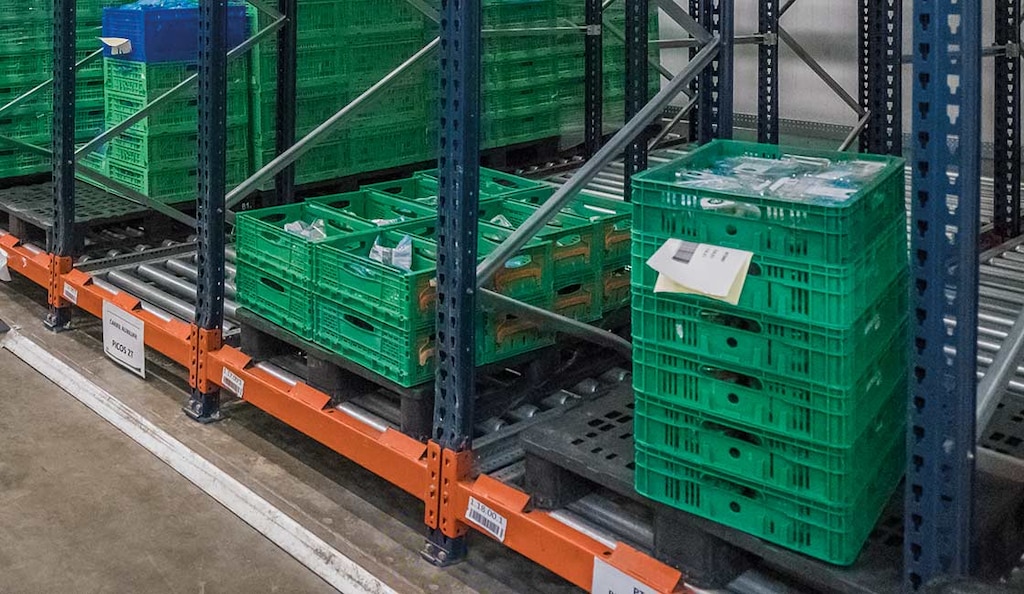
Plastic pallets vs wood pallets: Which are better?
Pallets are the go-to load platform for transporting goods across the supply chain. The market features different types of pallets that can be classified by size, structure, or production material. The most common materials used to manufacture these loading platforms are wood and plastic.
Choosing between plastic pallets vs wood pallets — and knowing which is best for your logistics needs — is essential for minimising costs and avoiding incidents that could affect your supply chain. Before deciding on an option, it’s important to know the features and characteristics of each type of pallet.
Differences between plastic pallets vs wood pallets
Beyond the material with which they’re made, wood and plastic pallets can be differentiated by other factors, e.g., weight, price and durability. Nowadays, wood pallets are the most commonly used in the logistics industry. Plastic pallets, however, are gaining ground, thanks to the advantages they bring companies, especially logistics providers.
These are some of the characteristics and most notable differences between plastic vs wooden pallets:
Manufacturing material
Most plastic pallets are produced by means of a high-pressure injection moulding process. The type of plastic normally used to make them is high-density polyethylene (HDPE). It doesn’t absorb moisture, so it’s relatively easy to keep clean and germ-free.
Wood pallets, on the other hand, are generally made from pine (softwood) and oak (hardwood) in North America and the UK. (This can vary in other parts of the world).
Weight
Another difference between these load-supporting structures is their weight: a wooden pallet weighs about 25 kg, while plastic pallets can weigh as much as 15 kg. This distinction means that wood pallets can be harder to handle manually.
Weight is a constraint that will affect your choice of pallet, all the more so for air freight forwarders, which tend to go with plastic pallets to save on costs.

Unit price
By and large, wood pallets are more economical than plastic pallets due to their material and production method (the plastic injection moulding process requires specific machinery). As they’re easier and cheaper to make, there’s no shortage of wood pallets in the market and prices are becoming more and more competitive.
The price depends on multiple variables, but a new pallet made from sturdy wood will run you about $15. Plastic pallets, depending on their construction and robustness, can cost anywhere from $10 to about $80.
Durability
Plastic pallets are more durable than wooden ones for several reasons. Wood is an organic material that eventually becomes deformed and destroyed. In addition to being made from several pieces, wooden pallets deteriorate over time. Moreover, if they get wet, fungi and bacteria can appear. But one advantage of wooden pallets is that they’re easily repaired. This prolongs their service life in the event of damage.
In contrast, plastic pallets are usually one-piece designs. They’re also less prone to damage because their material is waterproof and non-porous. Likewise, they don’t require maintenance and are easy to clean with water or cleaning products.

Safety
The absence of nails and splinters in plastic pallets makes them safer to handle and more uniform in size than their wooden counterparts. Nevertheless, if the plastic is wet, there’s a risk of the pallets sliding on the forks of the forklifts.
Wood pallets that are deformed or partially broken can cause accidents when being stored on the racks. This is why automated storage and retrieval systems (AS/RS) have pallet checkpoints. If the pallets are in good condition, they enter the AS/RS and if not, they’re reconditioned. The objective is to ensure the safety of the storage system and the goods.
Load capacity
The load capacities of wooden vs plastic pallets are similar. And European Euro-pallets can hold up to 1.65 tons when placed on racks and up to 4,000 kg when stored on the floor.
Plastic pallets, meanwhile, have a slightly lower load capacity when stored on racks — about 1,250 kg. On the other hand, depending on the type of pallet, they can support loads of up to 8,000 kg when stored on the floor.
Stackability
Wood and plastic pallets also differ in terms of space optimisation, particularly when storing and transporting empty pallets.
Plastic pallets can be nested one on top of the other, saving up to 50% in transport and warehousing space. Wooden pallets, though, are stackable but not nestable.
Legislative framework
International Standards for Phytosanitary Measures No. 15 (ISPM 15) regulates the use and shipment of pallets for use in international trade. Due to their composition and properties, plastic pallets are exempt from ISPM 15. For this reason, plastic pallets are mainly used in the food industry, as they ensure better ventilation, hygiene and safety. Furthermore, HDPE plastic pallets don’t require the issuance of certificates or documentation in international shipments
Wooden pallets, in compliance with ISPM 15, have to be disinfected to prevent pest infestations in international exchanges of goods.
A pallet for every need
Determining whether plastic pallets are better than wood or vice versa is a complicated choice that hinges on multiple variables. In recent years, plastic pallets have become popular, especially in the agri-food industry. But the difference in price between the two types means that wood pallets are still the predominant unit load.
You can also find other kinds of pallets on the market, of different sizes and shapes, such as containers and even metal pallets. With this varied offering, you can choose the pallet that best fits your logistics needs to optimise your supply chain.
All Mecalux storage systems are designed and adapted to be able to operate with plastic or wooden pallets. Interested in maximising your warehouse productivity? Don’t hesitate to contact us. One of our expert consultants will advise you on the best solution for your logistics operations.
